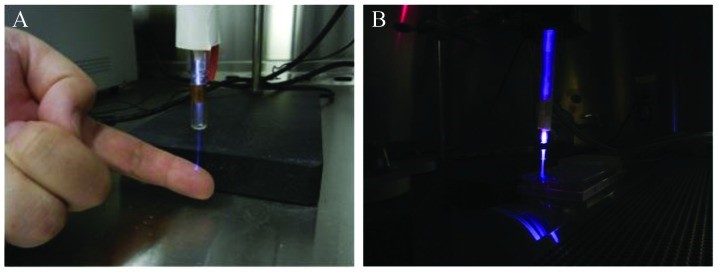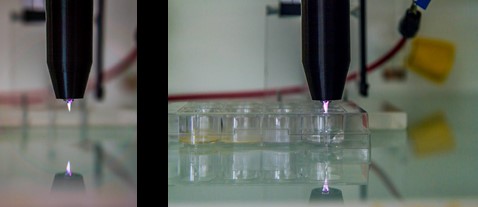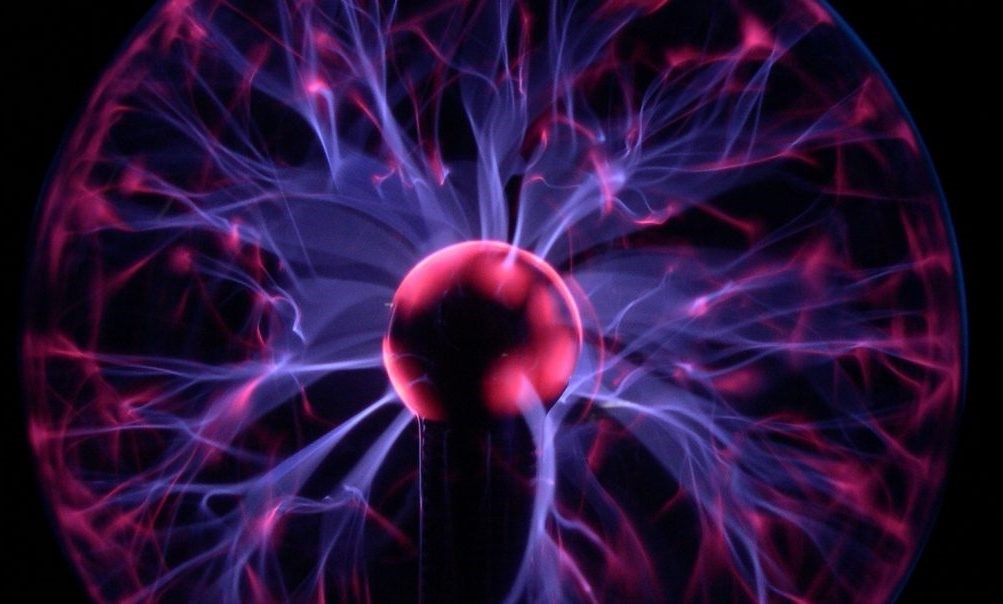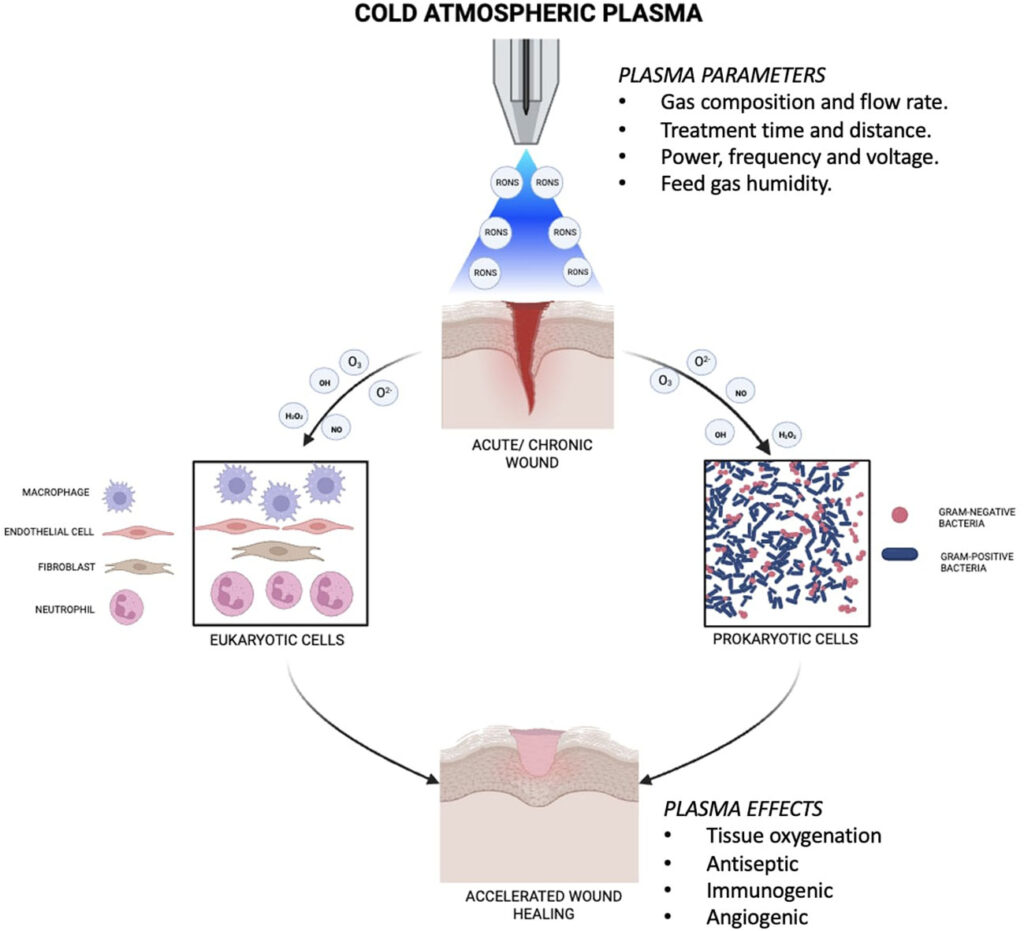Modern medicine considers wound healing to be one of the main ways that patients can get better faster and with minimal risk from different injuries, surgical interventions, and chronic pathologies. Traditional methods of treatment that have been used over centuries include ointments, stitches, and antibiotics; however, these are usually associated with disadvantages such as the risk of infection, delay in healing, and pain. Now, cold plasma helium is thrown into the mix-a phenomenal technology in the field of medicine today being heralded as carrying the key for quickening up the process of healing while reducing complications.
Cold plasma helium is a noninvasive therapy that many consider worthy of research and is used to alter the perspective on wound management. This technology deploys ionized gas particles interacting with the skin for cellular regeneration, accelerating the process while reducing rates of infection and further allowing the body’s natural healing processes. From chronic ulcers to surgical incisions, helium cold plasma offers a gentle yet powerful approach toward supporting tissue repair.
Understanding Helium Cold Plasma Technology
For simplicity, helium cold plasma is also referred to as “cold plasma.” The matter combines features of the gas and ionized particle states. Cold plasma differs from the high-energy plasma in stars and industrial processes for its non-thermal feature and safety for living tissues in case of direct application. Cold plasma instigates antibacterial, anti-inflammatory effects, and regeneration processes after treating tissues with wounds at the cellular level.

It works by producing plasma through the ionization of helium gas via a high-frequency electric field. This provides a stream of excited ions and electrons which is driven onto the surface of the wound. Unlike classic high-temperature plasmas, cold plasma of helium works at room temperature-it does not burn and hence does not destroy the tissue. On the contrary, it permeates the top skin layer, providing therapeutic effects without pain or scarring.
The Science Behind Plasma and Wound Healing
Cold plasma technology acts in concert with the body’s self-healing processes to create an optimal environment for wound healing. Treating an open wound with plasma instigates a series of biological events that work in unison to regenerate any destroyed tissue and prevent infections from developing.
- Cellular Stimulation and Growth Factor Release: Cold plasma promotes the release of growth factors, proteins that are critical in the early stages of wound healing. Growth factors stimulate cell migration to the wound site and promote the formation of new blood vessels, both of which are essential for wound closure.
- Antimicrobial Action: The most frequent complication in wound healing is infection, which complicates recovery by increasing further complications. Cold plasma contains active species such as hydrogen peroxide and nitric oxide, which effectively neutralize bacteria, fungi, and even viruses to result in a sterile environment for wound healing.
- Collagen Synthesis for Skin Integrity: Collagen is a significant protein that provides the structure and integrity of skin and other connective tissues. Cold helium plasma increases the production rate of collagen by stimulating active fibroblast activity involved in tissue repair and scar formation. This collagen synthesis translates into more robust, resilient tissue and can also minimize scarring on the now-healed wound.
How Plasma Interacts with Cells to Promote Healing
As in other medical treatments, due to their specific interference in cellular functions, helium cold plasma has a positive effect on the process of wound healing. Ions and electrons of plasma easily reach the skin surface if plasma is used on the site of injury-where the cellular events are induced, leading to speedy repair of tissues. Interaction occurs:
- Immune System Activation: When plasma is applied, immune cells are activated, which is very important for eliminating pathogens and repairing damaged tissues. A very good example encompasses immune cells such as macrophages, whose role is to “clean up” at the wound site, removing dead cells and pathogenic organisms. This type of cellular activation by helium cold plasma motivates faster and quicker healing.
- Cellular Regeneration: Plasma stimulates the production of keratinocytes and fibroblasts, two types of cells involved in skin regeneration. Keratinocytes contribute to forming the skin barrier, while fibroblasts produce collagen and elastin, proteins that give skin strength and elasticity.
- Anti-inflammatory Effects: Inflammation is, in effect, the natural reaction to trauma. In too high a degree, though, it is counterproductive to healing. Cold plasma helium assists in modulating the inflammation response by reducing cytokine production to further decrease pain, erythema, and edema of the wound site.
Applications of Cold Plasma in Wound Care
The advantages of helium cold plasma in wound healing are wide, making it suitable for all kinds of wounds. Chronic wounds, such as diabetic foot ulcers, venous ulcers, and pressure sores, usually resist conventional therapies and frequently face infections. Cold plasma’s antimicrobial and regenerative effects are particularly effective for these wounds, bringing relief in cases where other methods failed.

Cold plasma treatments are also helpful for surgical wounds. Immediately after surgery, the wound is especially susceptible to infection by bacterial invasion. Post-surgical wounds treated with helium cold plasma minimize the risk of infections and subsequently reduce the number of antibiotics prescribed, thus facilitating faster recovery.
Burns, including those characterized by second-degree burning, can also be treated using helium-cold plasma. Burns are best treated with caution to avoid infection and ensure successful skin regrowth. The cold plasma stimulates the skin cells and can reduce scarring, increasing the quality of the outcome.
Due to these effects, including the stimulation of collagen production, cosmetic applications of cold plasma in dermatology are made for conditions like acne scars and wrinkles. This application also shows the versatility of cold plasma beyond wound care and its potential for promoting skin health in a wide array of contexts.
Benefits of Cold Plasma Over Traditional Healing Methods
When comparing helium cold plasma to traditional wound-healing methods, several advantages emerge:
- Increased Healing Speed: Helium cold plasma accelerates the wound-healing process by enhancing cellular activity and collagen production. This leads to quicker recovery times, which is particularly beneficial for patients with chronic wounds or slow-healing injuries.
- Reduced Risk of Infection: Traditional treatments often rely on antibiotics or topical agents to control infections. However, with rising concerns over antibiotic resistance, there’s a growing need for alternative solutions. Helium cold plasma’s antimicrobial action provides a powerful, drug-free way to eliminate pathogens, reducing the risk of infections without contributing to resistance.
- Minimal Scarring: Due to its regenerative effects, cold plasma promotes collagen synthesis without excessive fibrosis (scar tissue formation), resulting in smoother skin and less visible scars.
- Pain-Free and Non-Invasive: Unlike some traditional methods that involve stitching or debridement, helium cold plasma is non-invasive and painless. Patients typically experience minimal discomfort, making it an ideal option for those with sensitive or painful wounds.
Steps in a Plasma-Based Wound Treatment at ZylMedical
Helium Cold Plasma treatment is designed at ZylMedical for comfort, safety, and efficiency. All patients are assessed in great detail for the best possible course of treatment regarding the kind of wound they present and taken into consideration along with the current health status of the patient. For a step-by-step explanation, the process goes like this:
- Initial Assessment and Preparation: It has to be done by a medical expert according to the patient’s wound, considering its size, depth, or if infection is possible. The area needs cleaning and preparation before the application of the plasma.
- Cold Plasma Application: Cold helium plasma treatment of the wound is performed with the help of specific equipment. These devices produce an ionized flow of helium gas that, when it comes into contact with the surface of the wound, stimulates its healing process.
- Post-Treatment Care: Plasma application would be followed by dressing the wound with sterile bandages. Post-operative instructions may also be given to the patients. Follow-up visits may be scheduled to monitor the wound’s healing progress.
Helium Plasma and Scarless and Skin Damage Minimization
Scars are the natural outcome of the healing process; however, sometimes, they may become overgrown and can lead to cosmetic and functional problems. Cold helium plasma treats wounds in several ways in a very gentle manner without scarring. Plasma treatment encourages balanced collagen production and hence allows the skin to heal without going into scar-forming overactive fibrotic processes.

The graver the injuries or burns, the heavier the toll of results from scarring tissues on mobility and appearance. Cold plasma, acting against inflammation and through its regenerative processes, would ensure that scar formation takes place in a much more orderly manner-that is, smoother and more flexible skin. This shall be very important in cases concerning facial wounds or other visible body parts where minimum scarring is desired.
Cold plasma helium treatment is not only indicated for wound treatments but has also been known to have a number of other beneficial effects on skin health, such as improving skin texture, reducing fine lines, and homogenizing skin tone. This is due to the stimulation of different skin cells, such as fibroblasts. Cosmetic applications of cold plasma give many reasons this gas can be versatile in dermatological, therapeutic, and aesthetic uses.
Current Research on Helium Cold Plasma in Wound Healing
Helium cold plasma is a relatively new technology that is continuously researched for its capabilities. In wound treatment, it has been able to reduce bacterial count, stimulate cellular growth, and accelerate wound healing. In fact, several studies show that cold plasma can shorten the time taken to heal a chronic wound by about 30%.
Another active field of research is the interaction of plasma with different kinds of bacteria, including antibiotic-resistant ones. Because antibiotic resistance is turning into an increasing problem, cold plasma capability in removing bacteria without the use of drugs becomes a growing interest. This, therefore, makes it not only valuable in wound care but also in avoiding infections acquired in hospitals.
Furthermore, cold plasma action in cellular regeneration and inflammation is investigated at the molecular process level. All these can further improve plasma technologies and assist in more targeted treatments for different types of wounds. Here at ZylMedical, we stay updated on all these latest developments so our patients can always have access to current and most effective methods of wound care.
Conclusion
Cold plasma helium can be regarded as a revolutionary novelty in the field of treatment and care for wounds. It is a non-invasive and very effective method of accelerating the healing process by minimizing infection risks. Ionized gas particles in cold helium plasma stimulate collagen synthesis, activate the immune system, and create optimum conditions for speedy healing. This technology has great promise for transforming wound care and giving relief to improve outcomes for millions of patients in the treatment of chronic ulcers, post-operative wounds, or burns.
At ZylMedical, we pride ourselves on scientifically based treatments. Helium cold plasma services for patient needs that are nonaggressive, highly effective, and efficient modalities for their healing. As new medical research and development furthers and expands the uses of cold plasma, we stand proudly as leaders in the industry, providing innovative treatments to our patients for wound care.

FAQs
- What is helium cold plasma?
Helium cold plasma is a type of non-thermal ionized gas that accelerates wound healing by eliminating pathogens, stimulating cellular activity, and enhancing collagen production. - Is helium cold plasma safe for all types of wounds?
Yes, helium cold plasma is safe for a wide range of wounds, including chronic ulcers, surgical wounds, and burns. It’s particularly beneficial for wounds prone to infections or those that require long healing times. - How long does it take to see results with cold plasma treatment?
Results vary based on the wound type and patient health, but many patients experience improved healing within weeks of starting cold plasma treatment. - Can helium cold plasma be used in combination with other treatments?
Yes, helium cold plasma is often used alongside traditional wound care methods, enhancing their effectiveness and providing additional benefits like infection control and pain relief. - Where can I access helium cold plasma treatment?
ZylMedical offers helium cold plasma treatment as part of our advanced wound care services. Our trained professionals ensure a safe and effective treatment process for optimal healing outcomes.

